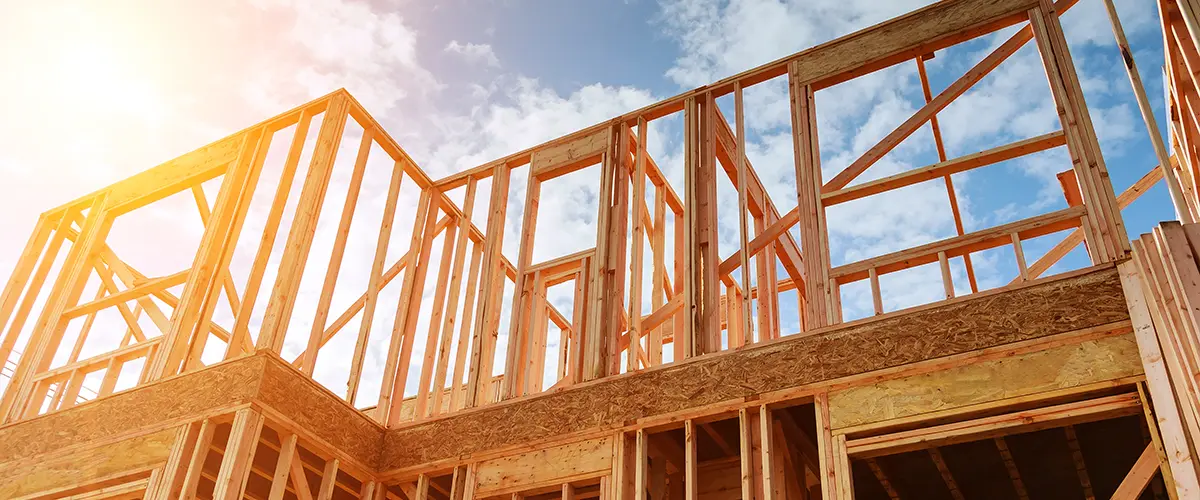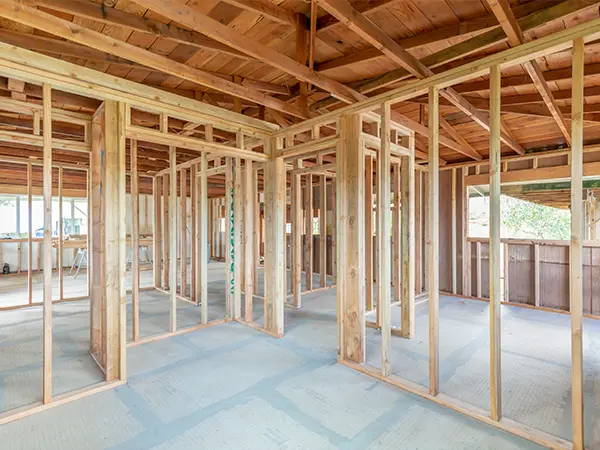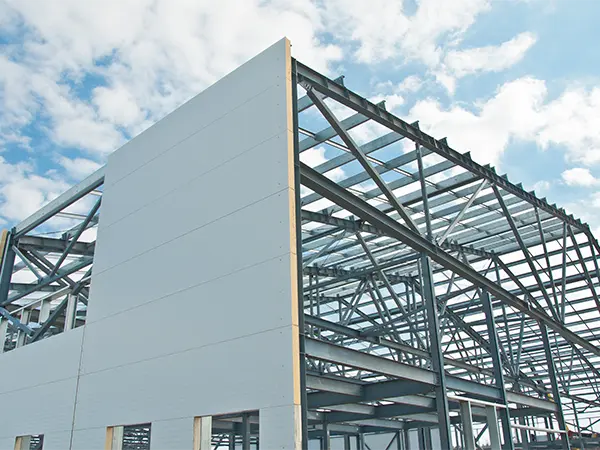Wood Frame vs. Steel Frame: An In-Depth Comparison for Your Next Construction Project
When you’re getting ready to build in Omaha, NE, the material you choose to frame your project is a big deal. It affects everything from how long your building will last to how much it’ll cost and even its environmental impact.
So, let’s talk about two of the heavy hitters in the construction world: wood frames and steel frames. They both have their perks and challenges, and we’re here to break it all down for you in simple terms!

Pros and Cons of Wood Framing
| Pros | Cons |
|---|---|
|
|
Pros and Cons of Steel Framing
| Pros | Cons |
|---|---|
|
|


Steel Frame Buildings vs. Wood Frame Buildings
When you’re stuck between steel frame buildings and wood frame buildings, there are a few things to think over. Think about what you’re gonna use the building for, the weather around your area, your budget, and, of course, what kinda look you’re aiming for.
Steel frames are tough as nails and perfect for buildings that need big, open spaces like warehouses or cool commercial spots. On the flip side, wood frames bring that cozy, natural look. They’re the go-to for homes where you want that classic, warm feel.
Choosing the Right Framing Material for Your Construction Project
Whether you’re drawn to the classic allure of wooden frames or the contemporary resilience of steel, the decision ultimately hinges on your construction project’s specific requirements.
At Built By Davis, we’re dedicated to offering expert advice and top-notch construction services, ensuring your project benefits from industry-leading practices.
Ready To Start Your Construction Project?
If you’re gearing up for a construction venture and pondering the merits of steel versus wood framing, reach out to Built By Davis. Explore our array of services and discover why we’re the go-to choice in the construction realm for innovative and eco-friendly building solutions. Contact us today at (402) 804-9321!
Environmental Considerations: Wood vs. Steel Framing
Wood Framing: Wood is a renewable resource, and responsibly sourced timber can minimize environmental impact. Forest Stewardship Council certification ensures wood comes from responsibly managed forests.
However, deforestation and the carbon footprint associated with transporting lumber can offset these benefits if not managed sustainably.
Steel Framing: Steel’s most significant environmental advantage is its recyclability. Steel can be recycled indefinitely without losing its properties, reducing the need for new raw materials.
However, the production of steel is energy-intensive, contributing to higher CO2 emissions compared to wood production.
Construction Speed and Efficiency
Wood Framing: Wood is praised for its speedy on-site assembly, facilitated by its lighter weight and the abundance of experienced carpenters well-versed in wood construction methods. This often translates to faster project completion, particularly in residential builds.
Steel Framing: Although steel framing may demand specialized labor, its off-site prefabrication can notably expedite on-site construction. Steel elements are precisely manufactured in a controlled factory environment, cutting down waste and simplifying assembly processes.
Regional Considerations and Building Codes
- Climatic Conditions
In areas prone to moisture, termites, or severe weather, steel framing offers durability and resistance to decay that wood cannot match. Wood's natural insulating properties might be more beneficial in colder climates to reduce heating costs.
- Building Codes
Local building codes and regulations may favor one material over the other based on regional safety requirements, fire resistance standards, and sustainability goals.
Innovations in Framing Materials
The construction industry is continually evolving, with innovations in both wood and steel framing that aim to address their respective shortcomings. Innovations such as cross-laminated timber are bolstering wood’s strength, while advancements in steel production are making it more eco-friendly.
These breakthroughs are opening up new horizons for both materials, shaping the future of construction.
Building for the Future with Confidence
As we’ve delved into the realm of wood versus steel framing, it’s become evident that each material brings its own unique strengths and challenges to the construction scene. Choosing between wood and steel isn’t just about personal preference – it’s about ensuring your project is sustainable, efficient, and adaptable to local conditions.
Whether you’re drawn to the cozy charm of wood or the robust durability of steel, the success of your project lies in carefully weighing the implications of these materials.

Ready to Bring Your Vision to Life? Get in Touch with Built By Davis
Embarking on your dream construction project begins with a simple conversation. Whether you’re interested in exploring wood or steel framing options, or if you have a unique vision that pushes the boundaries of traditional construction, Built By Davis is here to turn that vision into reality.
Our expertise, coupled with a passion for quality and customer satisfaction, makes us the ideal partner for your next project.
Don’t let the intricacies of construction overwhelm you. Reach out to Built By Davis at (402) 804-9321, or visit our service page to discover the full range of construction services we offer. From initial consultation to the final reveal, we’re here to guide you every step of the way!
